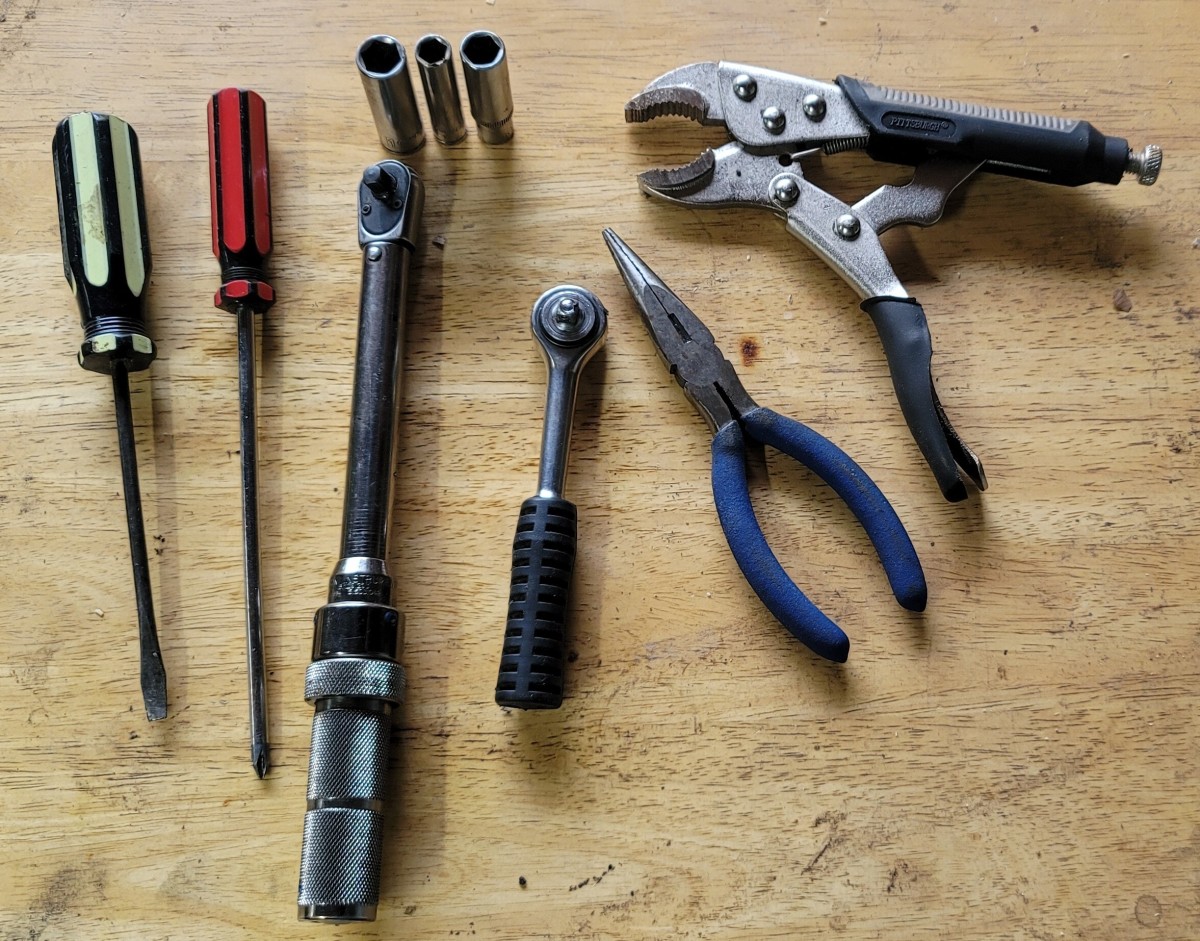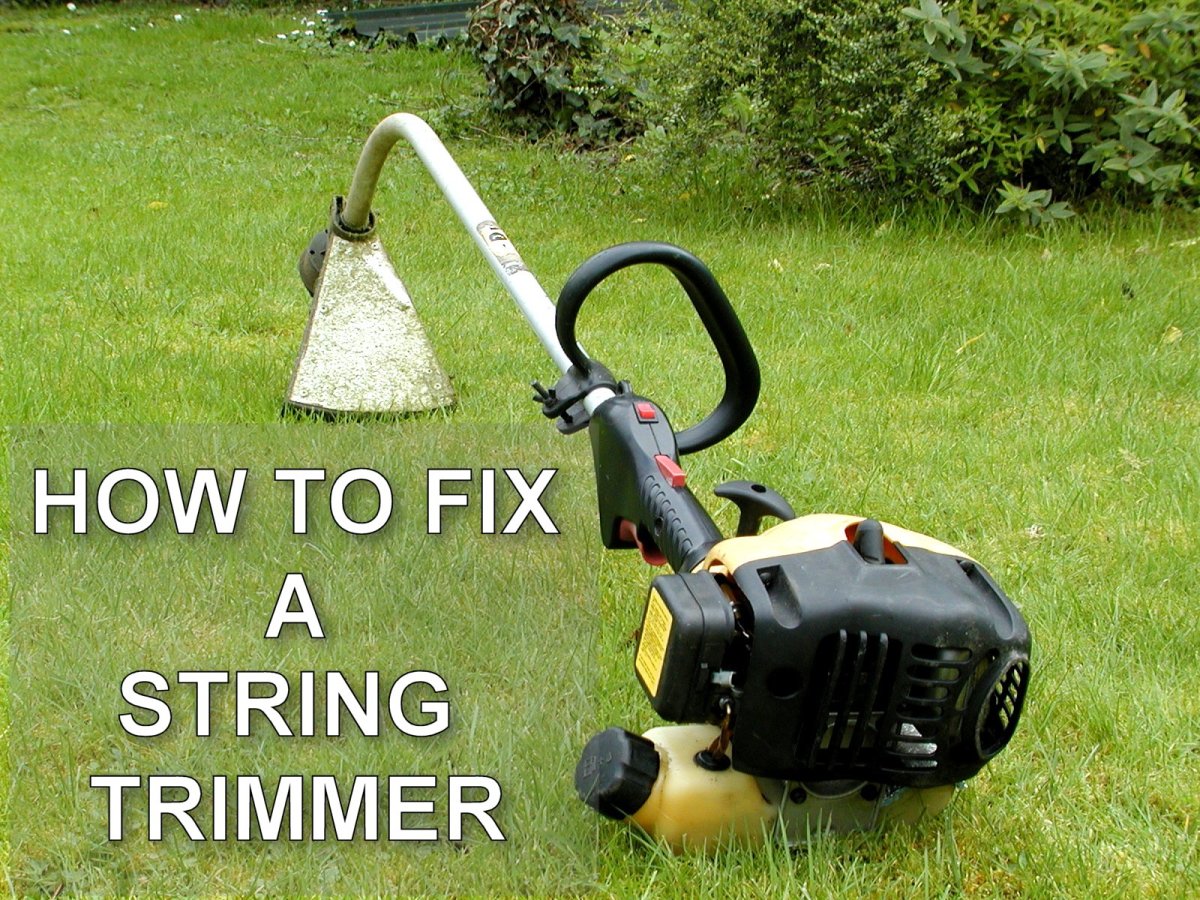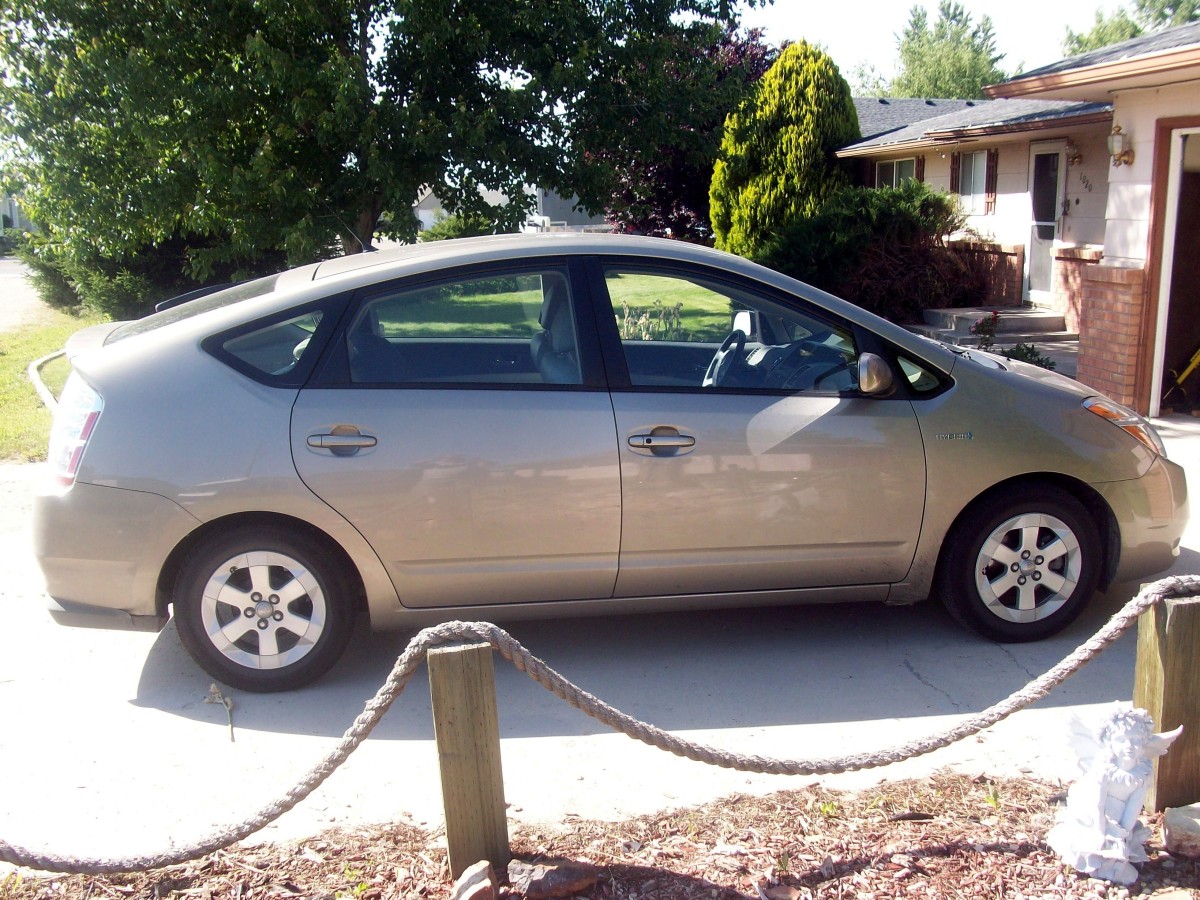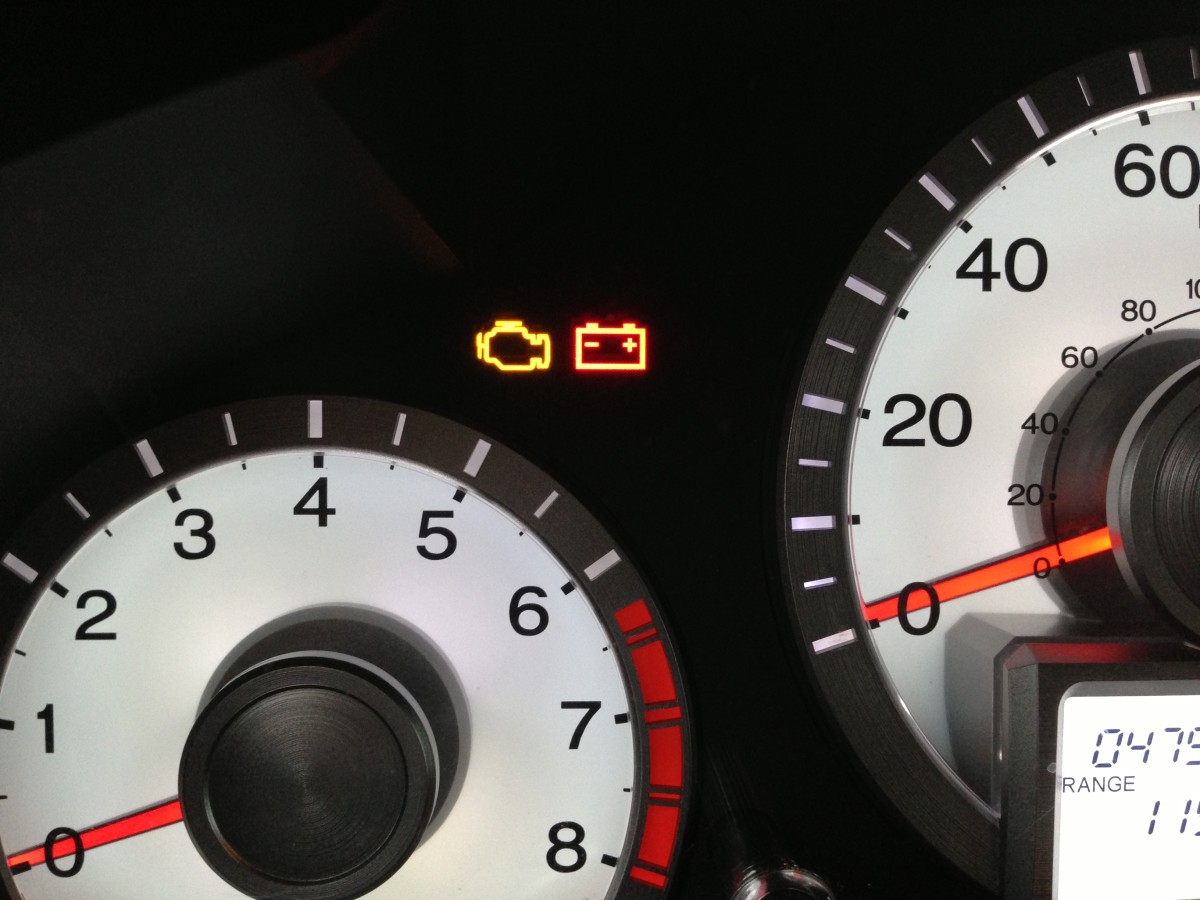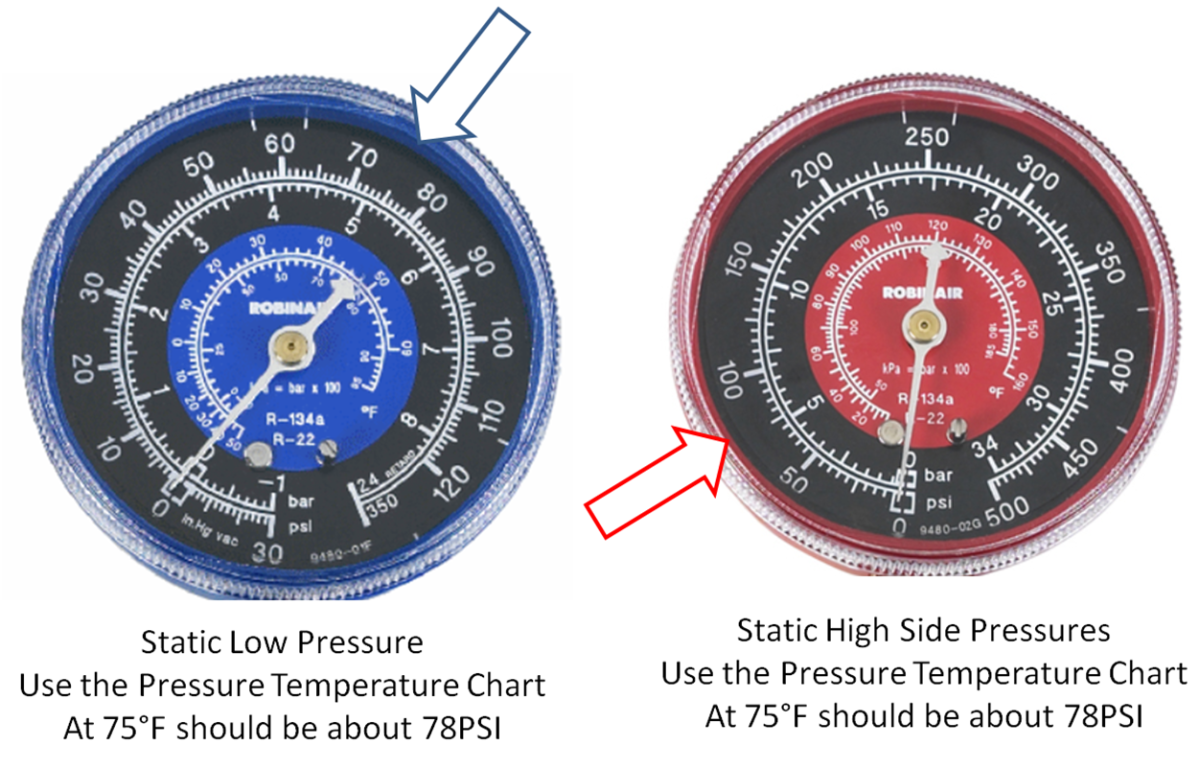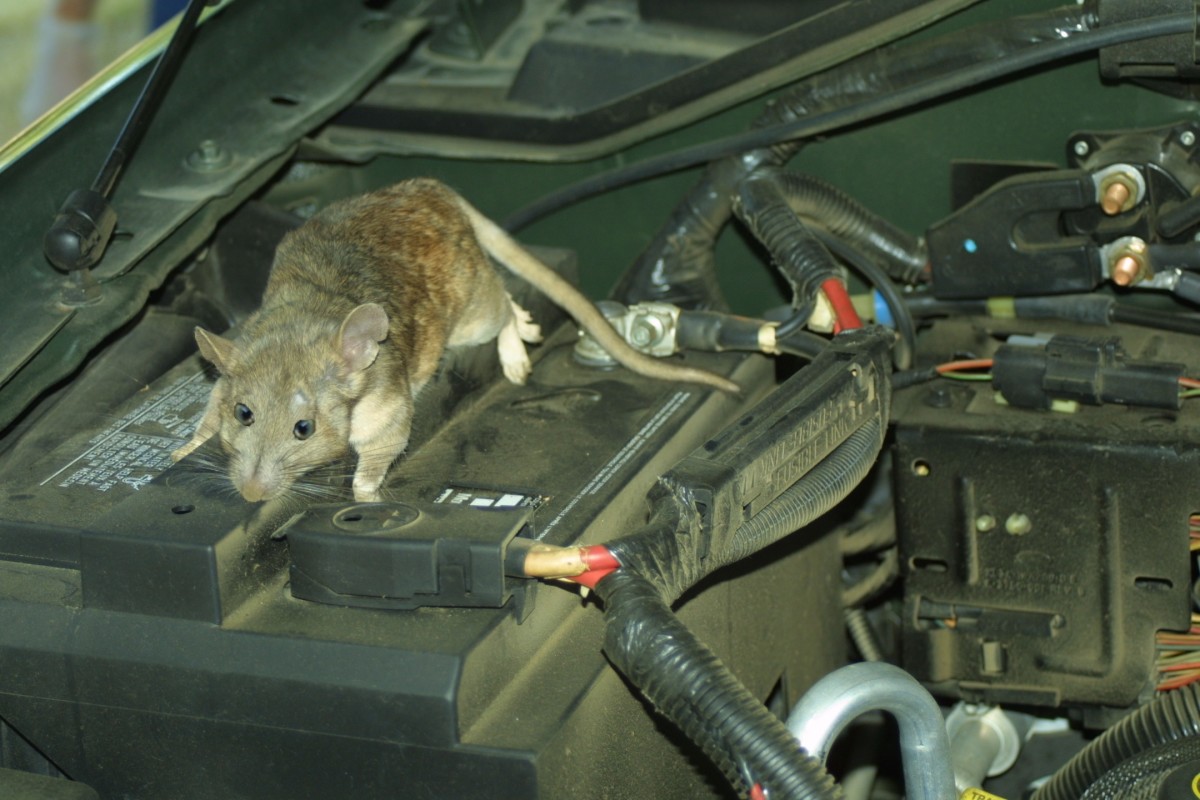How to Change the Oil in Your Car / Van / Truck Engine
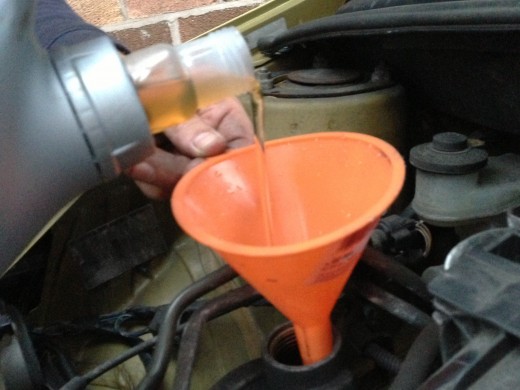
Changing your car engine oil is vital if you want to keep your engine in good shape, lubricated and running properly. If you do it regularly, your car, van or truck will live longer.
It's something that garages will charge you to do. This isn't ideal in my opinion as not only do they not treat your car like you would, but you're paying for something that you can do yourself at home with ease.
Learn how to do it yourself, then you know it's done right and will save yourself cash in the process! What could be better?
The first thing to do is to check your service schedule. How often is it recommended to change the oil in your car? Some people change their oil at shorter schedules than is recommended, I've heard of people changing their oil at 3000 mile intervals, but this is a little excessive in my opinion and is usually only done by people with high performance tuned cars.
Most people tend to change it every 7-10000 miles and with modern oils this is fine nowadays as they tend to stay viable for lubrication for this amount of time. But hey, it's your car, you change it as often as you want, or can afford.
How to choose the right oil viscosity.
Something you need to do is get the right oil for your engine. You should be able to do this by just checking the manual. However choosing the right oil is not always that easy as even in the manual you will have several different choices. These relate to the temperature that the oil is rated at and you'll need to choose an oil depending on what country you live in and what temperatures your engine will normally see.
Let's say you see something like 0w40, 5w40 and 10w available to use. The first number is the viscosity when cold and the second is at running temperature.
All will have the same amount of viscosity at running temperature as they are all 40. 0W40 is not a thinner oil, rather it is an oil that flows much more quickly under low temperature conditions. This is something that you'll have to check depending on where you live, in the UK then there is not usually a need for 0 weight oils as the temperature doesn't really drop too low, but in some countries this would be necessary, basically really cold ones!
Anyway, check your manual and ensure you get the right oil for your car depending where you live. It's not usually too tough to work this out and if you're in doubt, ask in the shop.
Synthetic, Mineral, Part Synthetic?
My advice here would be to get synthetic unless you're really broke. The big name oil companies, like Mobil and Castrol are pretty safe bets, although there are plenty of other brands.
You can save a bit of cash getting the cheaper oils, but what's the point really, you spend a lot on your car so a small amount of difference in oil prices is nothing really in my opinion, get the best you can. That's what I do anyway, everyone is different of course.
A sump / drain plug. Yesterday.
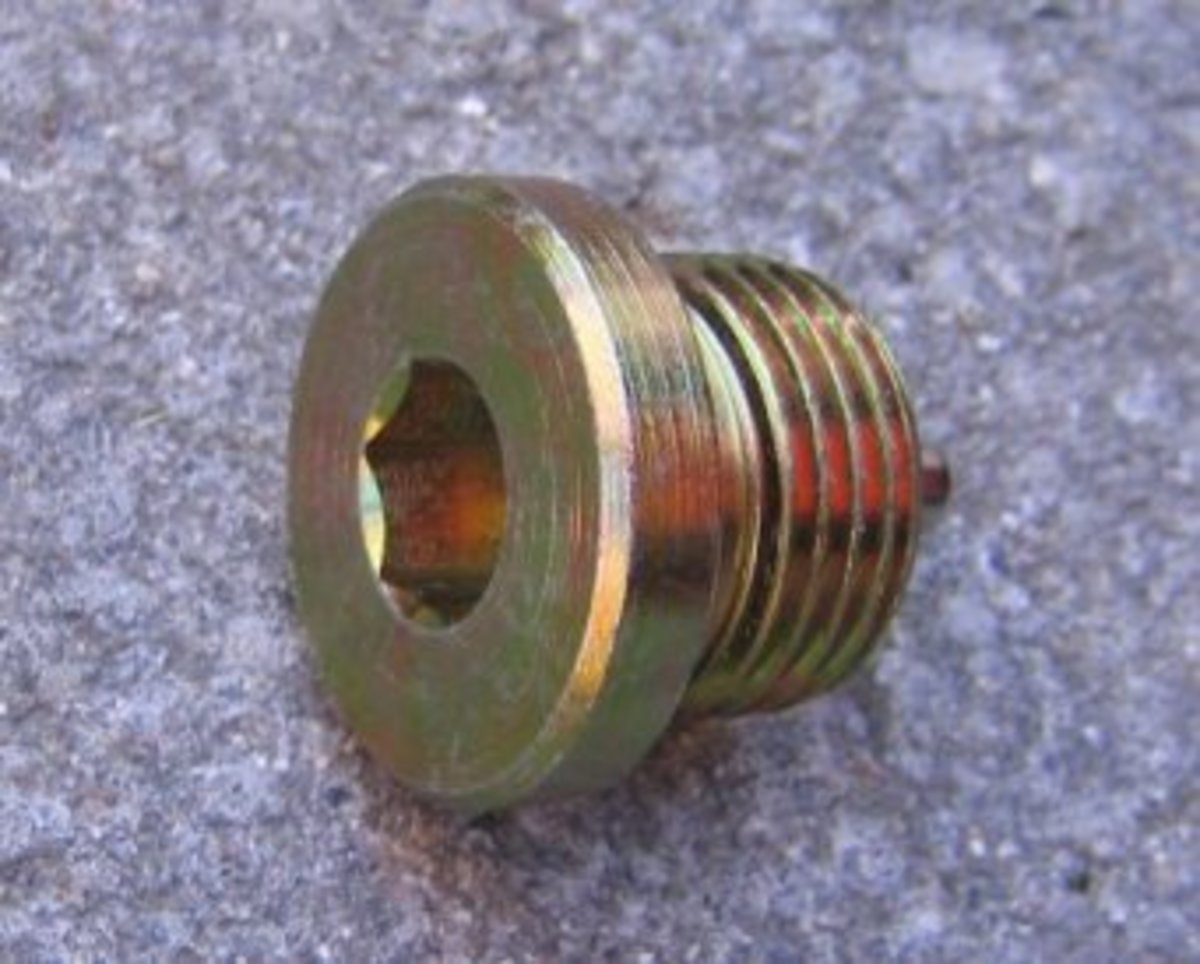
Anyway, you've got your oil, you've got the recommended oil filter, you also will need something to drain the oil into, for example an oil drain tray, plus an Allen hex key to undo the sump plug, or possibly a 14mm spanner, depending on what type of plug is there. I also recommend some old blankets or newspapers to put under the car in case you spill any oil, which you will. The sump plug is usually towards the back of the sump, which is usually the lowest part of the engine.
Firstly get the oil warm as this will make it flow out quicker. If you drain the engine while it's hot, then it will flow out like water, whereas if cold it will be thicker and slower to drain. Obviously you don't want to burn yourself so don't go crazy, just get it so the engine is warm/hot to the touch then do it.
You'll probably need some of these
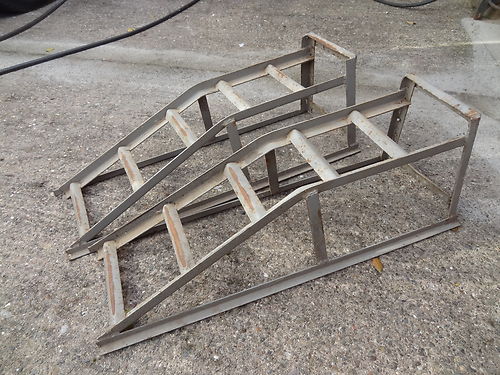
Should you put the car on ramps?
If you put your car on ramps, then it not only helps you get to the sump plug, but it also tilts the engine backwards to some degree, as the sump plug is usually located at the back of the sump, then it gets even more oil out of the engine.
Kick the ramps under the front wheels and make sure you take your time when driving up there. They have a bump stop so you're unlikely to drive off the end unless you're driving up them like a maniac. A pair of ramps are a very useful addition to your tool collection, so I highly recommend getting some if you don't have any.
I usually put the tray under the car, then undo the sump plug, taking care not to drop it in the tray and then let it all drain into the tray. Like this.
Feel the flow

After this, take out the oil filter with a filter removal tool. You will have to find it first of course and they are located in all sorts of different places on different engines. Thankfully on most engines they're pretty easy to find, especially as they are usually about the size of a drinks can and are sticking out of the engine somewhere.
There are several different types of removal tool around, but they all work the same way. I prefer the spider type that attaches to a wrench, but the chain types work as well, as long as there is room to get in there.
This tool here..

Will detach this from the engine! Rag is essential as you can see..
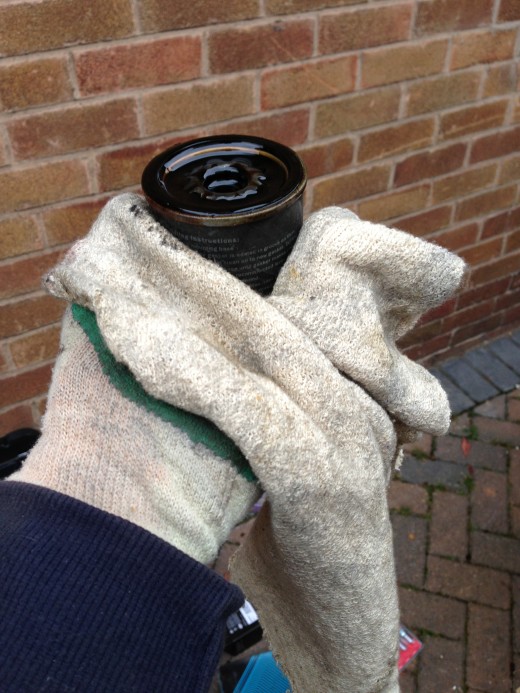
This is an action shot of my hand preparing the new filter
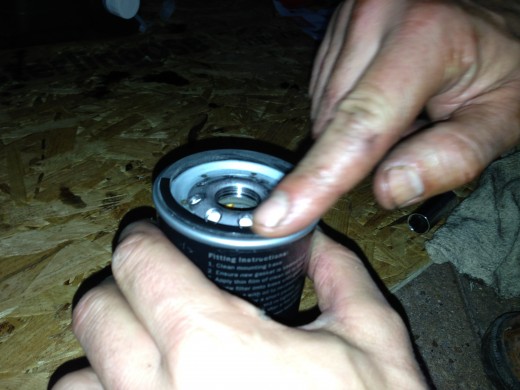
Glug Glug Glug
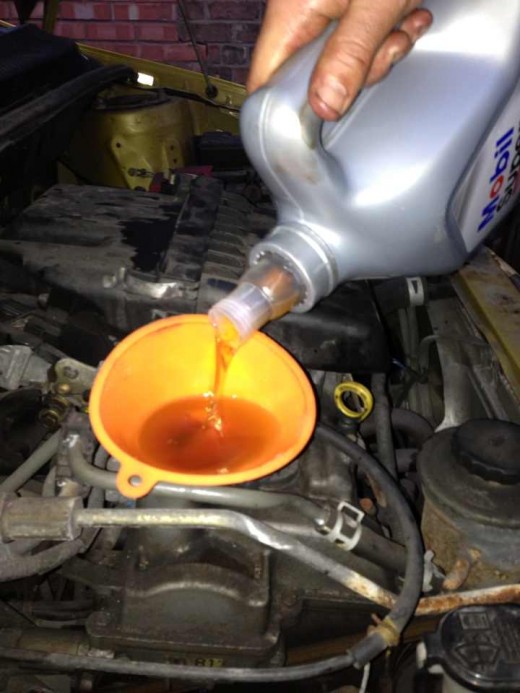
After you've taken the plug and filter off, then take off the oil filler cap as well and let the oil drain for as long as possible. The hotter the engine was, the faster the oil will drain.
I leave it til it's completely stopped dripping. When I had a big old BMW V8, which held a lot of oil, it seemed to drip for ages, so I left it overnight. I don't know how much came out overnight, but whatever came out was out of the engine, so I thought it was worth it.
After it's stopped dripping, pour a bit of oil through the engine through the filler cap to flush it (not much needed here and whatever you put in will just be thrown away so don't put too much through!
Then clean and replace the sump plug and then the oil filter. Before you put the oil filter on, then give the rubber seal a wipe round with some of the new oil.
Don't go crazy tightening the new filter. Hand tight is the supposed tightness, but I always go hand tight, plus a little more just in case. Your oil filter coming off is a bad thing remember..
After this, then all you have to do is get the car off the ramps, then refill it with oil. If you don't get it off the ramp first you won't have an accurate reading on the dipstick, so you are better to get it off the ramp if possible.
I prefer to push mine backwards off the ramp, but that's because I have the room, If it's a heavy car or you don't have much room, then you won't be able to do this, so just make sure you've read the manual on how much oil you are supposed to put in, put a bit less than that in so you can start the engine to reverse off then fine tune it, by adding a bit at a time while checking the dipstick.
Don't fill it above the max line on the dipstick.
The next step is clean up the tools and pat yourself on the back. You've just changed your oil and prolonged your engine's life. Well done! Don't forget to take your old oil to the recycling centre rather than pouring it down the drain. It doesn't cost anything and will give you a nice warm feeling as you'll know you've done the right thing.
There are other aspects to engine maintenance, that I've covered in some of my other articles, so feel free to check some of those out if you want to learn more.
I hope this article was useful, if you have any comments, then please leave them below. Thanks.

